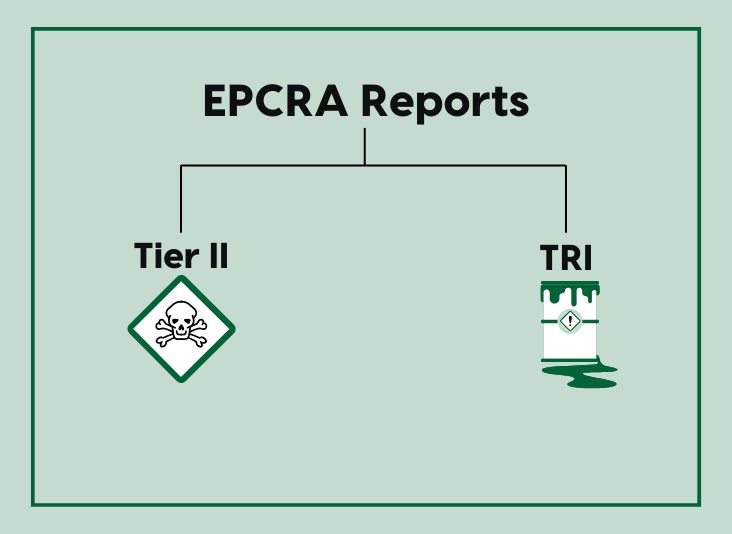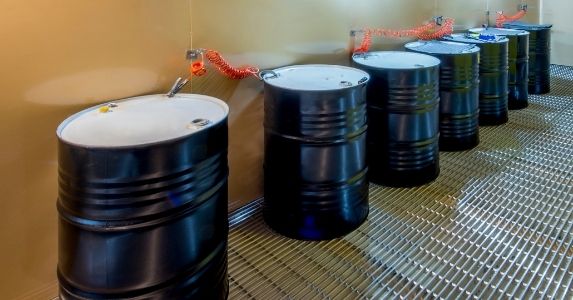Ongoing Awareness Assists with EPCRA Reporting
Every year, environmental, health, and safety (EHS) managers scramble to meet mandatory deadlines for Emergency Planning and Community Right-to-Know Act (EPCRA) reporting.
EPCRA submission deadlines are scattered throughout the year, and noncompliance can lead to safety gaps as well as violations and severe financial penalties. As such, it’s crucial that managers maintain constant operational awareness regarding hazardous chemical inventories—along with the related planning and safety preparations. Keen focus will:
- Make reports easier to file
- Improve report accuracy and thoroughness
- Boost the organization’s overall safety and operations posture
EPCRA Regulates Hazardous Chemicals
EPCRA, an Environmental Protection Agency (EPA) regulation, helps protect communities and the environment through mandated chemical inventory reporting. This law requires that every organization that has stored or used hazardous chemicals within the previous calendar year file a report outlining quantities and uses of these chemicals within their workplace, with varying requirements for what and how to report based on each organization’s specific chemical inventory and activities.
It’s hard to overstate the importance of EPCRA in community and safety preparedness, as it enables preplanning and rapid emergency response in the case of a chemical event. Transparent chemical inventory and release data will protect an organization’s workforce as well as the local community. Your workers and local residents have a right to know what risks they face—and how to best manage these risks in the case of a chemical event. EPCRA reports allow internal and external first responders to quickly assess a situation and handle it accordingly.
Noncompliance with EPCRA, including in the form of informational gaps or errors, comes with hefty fines—underscoring the emphasis placed on chemical transparency. Organizations face penalties amounting up to $59,107 per day, per violation if they do not meet EPCRA reporting requirements.
Tier II and TRI Reports
Beneath EPCRA’s broader requirement umbrella, two main reports exist:
- Tier II reports, also called Emergency and Hazardous Chemical Inventory reports
- Toxic Release Inventory (TRI) reports, also known as Form R reports
Both reports support operational chemical safety and transparency but each has different requirements and deadlines—demanding constant managerial focus and awareness.
- Tier II reports are necessary when chemical storage quantities equal or exceed 10,000 pounds (generally) for any specified chemical at any one time in a reporting year. Required reporting quantities may differ, though, for “Extremely Hazardous Substances” (EHSs). These reports are due on March 1.
- TRI reporting requires managers to indicate what chemicals of concern have had a measurable release within the previous year. This data tends to be more granular and is publicly available—increasing the disclosure burden to reporting parties. TRI reports are due on July 1 of each year.
Stay Vigilant, All Year Long
All EPCRA reporting processes involve:
- Educating all stakeholders about report guidelines
- Quantification of chemical totals
- Preparation of the actual report
Executing these protocols can be a long and arduous endeavor—so it is important to begin early. Without proper preparation, data gathering and report filing requires managers to reassign workers from their daily routines to assess chemical quantities, which can impact operations and cost precious resources including time and money.
In fact, it’s never “too soon” to make progress toward reporting compliance. Early and constant attention to reporting requirements enables organization to:
- Provide accurate information
- Complete reports on time
- Avoid noncompliance fines
- Limit operational disruption
Eyes on Chemical Inventories
Anticipating possible EPCRA reporting challenges is key, as this will make a manager’s work easier, help ensure smooth operations, and likely result in maintained EHS compliance. Fortunately, there are various ways to monitor and track hazardous chemical quantities and usages throughout the year. Among others, these include:
- Implementing or leveraging an existing chemical inventory management solution. Such a platform should:
- Generate data in near real time about on-site chemical stocks and the operations they support.
- Include a comprehensive, auto-updating, accurate, and customizable chemical inventory software, as this will simplify and streamline any and all future reporting.
- Operate 24/7/365 as a source of accessible, accurate, and condensed chemical information.
- Allow EPCRA stakeholders to harvest relevant information easily, at any time—minimizing operational disruptions and allowing workers to keep focus on core competencies even during reporting periods.
- Conducting regular operational audits to pinpoint vulnerabilities in the chemical handling program. This is a way to identify any previously undetected or new chemical escape routes. Understanding all known potential escape avenues will accelerate reporting and streamline compliance processes.
- Involve experienced and knowledgeable staff members. Year-round training will encourage preparedness, ensure deadlines are met and reports are created accurately.
Stay Ahead of Reporting with Triumvirate Environmental
Triumvirate Environmental is the one EPCRA resource you need, ready to provide everything you need to report. From chemical inventory management software to TRI and Tier II reporting help and consulting services, we offer all the services you need—so you can realize upfront benefits of early preparation and streamlined access to current and accurate hazardous chemical data. Contact us today to learn more.






